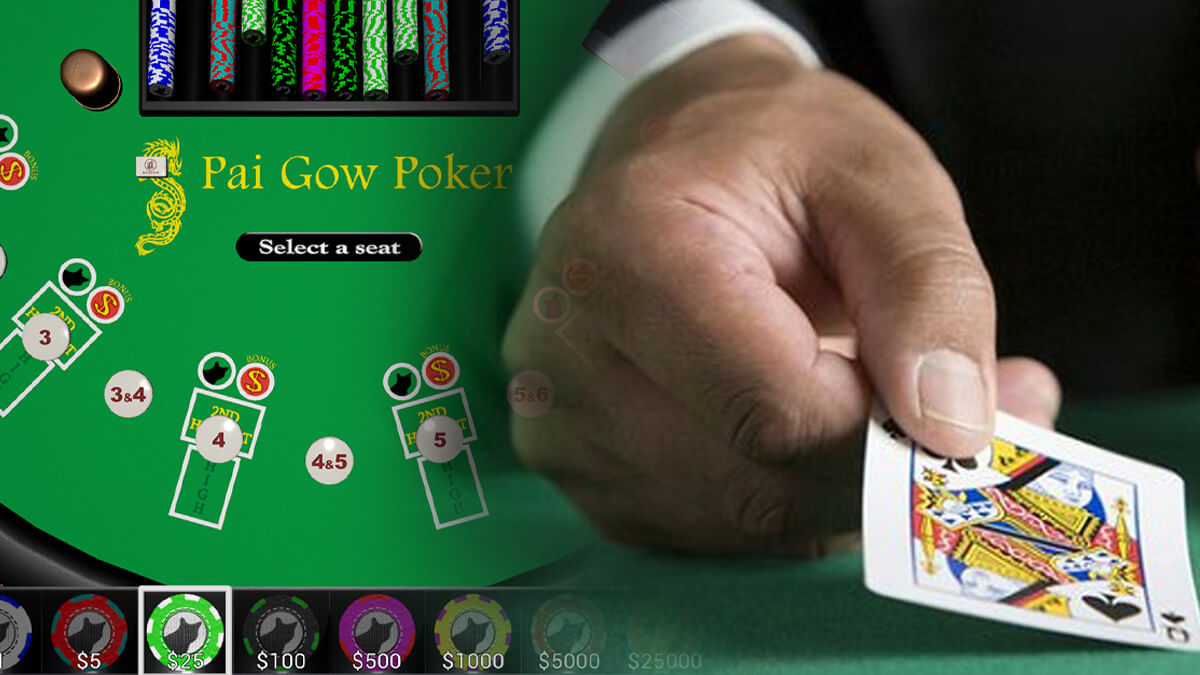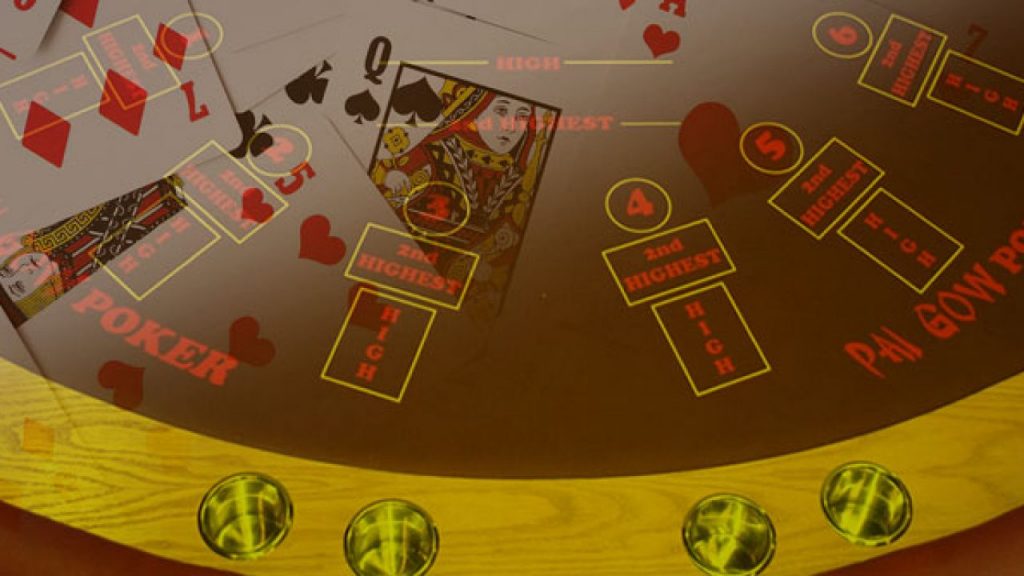
Pai Gow rules:
- The game involves a deck of 52 cards and 1 joker. Each player is dealt 7 cards, only the player sees them;
- Then the player must divide these 7 cards into two hands: the 1st hand or “top” (high) 5 cards and the 2nd hand or “bottom” (low) 2 cards. The combination of the lower hand must not be stronger than the upper hand – otherwise you will automatically lose;
- The cards are opened;
- The dealer also divides his cards into 2 hands and opens to the player;
- The combinations of both hands are compared. If both player’s hands are higher than the dealer’s – then the player wins 1 to 1 (minus 5% commission in favor of the casino). If only one hand is stronger and the other is weaker – then a draw is declared, then the bet is returned to the player. If both hands were weaker, the bet goes in favor of the casino;
- The joker can complement any of the following combinations of straight, flush, straight flush or royal flush. If there are no such combinations, the joker acts as an Ace. On the bottom hand, the joker is always an Ace.
Hand Probabilities in Pai Gow

Before you start playing any casino game, you should first understand the probabilities and casino advantage of the game. In this case, the casino game: Pai Gow. The percentage probabilities clearly show what the game is all about:
- Draw: 41%.
- Player wins both hands: 29%
- Dealer wins both hands: 30%
Another thing to consider is the probability of certain hands falling out. Since the player and the dealer each get seven cards, there is a high probability of a pair or even two pairs in those seven cards. So what are the odds of the different combinations?
Pai Gow Poker Strategy
The most important thing in this game is learning how to divide the cards between the top and bottom hands. Here are the basic rules that can keep your math expectations at 2.7%.
1. No combination: leave the highest card on the top hand, the next two cards on the bottom hand.
2. One Pair: leave a pair on the top hand, send the two highest remaining cards to the bottom hand
3. Two Pairs:
- Do not split if you have a point total of nine or less with a king or ace;
- Do not split if you have a total of fifteen or less with an ace;
- Exception: Split sevens and twos with a king or higher;
- Exception: splitting Kings and twos with an Ace;
- Exception: to separate Jacks and Fours with an Ace;
- Exception: Do not split Sevens and Eights (Nines) with an Ace,
Where points correspond to the face value of cards (2 to 10 is the same as the card face value, 11 is Jack, 12 is Queen, 13 is King, 14 is Ace)
4. Three pairs: the highest pair to move to the lower hand.
5. Three identical cards
Always defer three identical cards for the first hand, except for Aces, in which case, you should leave a pair of Aces in the first hand and defer the third Ace in the second.
6. Straight or Flash
- Leave the regular Straight/Flush for the first hand. If you have a six-card Straight/Flush, put the highest cards in the second hand.
- Straight/Flush and Pair: Set aside a pair for your second hand.
- Straight/Flush and Two Pairs: See the two-pair rule.
7. Full house .
Always split, except for a pair of twos or if you are left with an Ace-King for the second hand.
8. Four identical cards
- 2 through 6: Leave it for your first hand.
- 7 to 10: Split up if you can’t spare an Ace and a piece for your second hand.
- Jack to King: Split if you can’t lay down a pair of tens or higher for the second hand.
9. Straight Flush.
If you have only straight Flush: Leave it in the first hand.
10. Straight Flush and two pairs higher than 10: Separate. Also separate a pair of Aces from another pair.
11. Street Flash with two pairs and an Ace: Place two pairs in the first hand and an Ace in the second.
Use Street or Flash for the first hand if you manage to put away an Ace or a “picture” for the second.
12. Royal Flush.
Royal Flush only: move it to the first hand.
13. Royal Flush with Two Pairs: See the two-pair rule.
If you can put a pair in the second hand and leave a straight or flush in the first: Split.
14. Five Aces.
Split, unless you can put a pair of Kings in the second hand.
At first glance, this system is complicated, but once you try it a couple of times in practice, everything falls into place.
In general, Pai Gow Poker is not as common as plain poker or video poker. But it is possible to find it in the vast expanses of the Internet. The most basic advantage of this type of poker is that you have essentially one opponent – the dealer.
